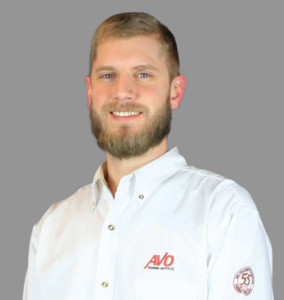 NETA’s Corporate Alliance Partners (CAPs) are a group of industry-leading companies that have joined forces with NETA to work together toward a common aim: improving quality, safety, and electrical system reliability.
NETA’s Corporate Alliance Partners (CAPs) are a group of industry-leading companies that have joined forces with NETA to work together toward a common aim: improving quality, safety, and electrical system reliability.
In our continuing CAP Spotlight series, we highlight some of their individual successes. In this issue, NETA World interviews Ralph Parrett, Manager of Content & Delivery, at AVO Training Institute in Dallas, Texas.
NW: What is something readers don’t know about your company?
Parrett: AVO Training has fewer than 25 employees, which creates a family work environment. Without question, each employee is dedicated to excellence and the success of AVO’s students. Each and every one of our employees takes extreme pride in their individual responsibilities and realizes the impact they have on the overall success of AVO and the students who attend our courses.
Since the onset of COVID-19, AVO has become very flexible in scheduling courses to meet customer needs. Our 2020 schedule was rattled by the quarantine as well as by keeping up with the federal, state, and local safety requirements that caused a lot of movement of students to help them be able to attend courses. We are now more flexible to provide courses for customers’ employees to meet their training needs while keeping health and safety the highest priority.
AVO Training functions as a business within a business inside of Megger, an international electrical test equipment company based in Dover, England. This gives AVO access and collaboration to engineers leading the industry in test equipment and testing techniques. AVO’s name goes back to one of the groundbreaking electrical test meters capable of measuring amps, volts and Ohms.
AVO realizes that the future of electrical safety training is to adapt to the student’s evolving training needs and preferences by adopting modern learning strategies. Learning happens in classrooms, but it also happens in virtual classrooms, online environments, white papers, presentations, YouTube videos, discussions, forums, and chats. We find value in both formal and informal learning, as well as having our instructors contribute to the larger discussion of arc flash hazards and general electrical safety. Our students work in jobs where they cannot afford to take chances and make mistakes. A split-second wrong decision can be deadly — and we want to be top of mind by constantly driving home the safety-first message through multiple information channels.
NW: What recent company achievement or milestone are you particularly proud of?
Parrett: In May 2019, AVO’s processes achieved IACET accreditation, which confirms that our policies and processes meet those similar to higher education providers equivalent to community colleges.
AVO’s headquarters in Dallas also relocated into new facilities — a daunting task in itself to get all the people and equipment moved and set up. The new facility provides more than twice the amount of classroom and lab space and provided an opportunity to upgrade technology and equipment in the classrooms and labs for years to come.
AVO’s greatest accomplishment in 2020 was pivoting our in-person instructor-led training to a virtual, online delivery method. This has allowed AVO to continue to provide safety and equipment training to help our customers stay safe and compliant.
NW: What evolution on the horizon do you expect to have a positive impact on your work?
Parrett: AVO is in the construction phase of a new, high-powered learning management system (LMS) that will greatly enhance our ability to provide customers with a stellar experience before, during, and after they attend training. Customers will be able to self-enroll and purchase courses; they will also have the ability to retrieve training records and certificates by simply logging into the system. The system will also permit AVO certifications to be maintained autonomously by sending reminders to technicians prompting them to renew their certification through the learning portal.
Another evolution the LMS will contribute to is replacing hardcopy textbooks with tablets. This will enable our graphics design team to include videos and interactive animations within the text that was not possible with textbooks. The tablets will produce a greater and more interactive experience for our students. It will also provide a viable tool available to students with an internet connection after they have completed training with AVO.
Internally, the LMS will permit AVO to update training materials quickly, effectively, and efficiently whenever needed. This will streamline adjustments based on feedback from instructors and students, industry changes, or acquisition of new equipment.
AVO is also investing in virtual reality training modules to supplement our training offerings. The VR modules will place students into an environment that can be difficult to create and control in real life when requiring the attendant to go through an evolution such as lock-out/tag-out or applying personal protective grounds. This advancement will increase retention rates and result in higher safety and efficiency for students returning back to the workplace.
NW: What challenges do you see going forward for the industry?
Parrett: As in every industry right now, the most immediate challenge is COVID-19 and how to keep our students and staff safe and healthy while they learn and work. We’re taking steps by decreasing class sizes to allow social distancing in the classrooms and labs, adhering to a strict mask-use policy, and performing health checks for students and staff on a daily basis.
Another future challenge is continuing to expand our virtual training offerings. Since March of 2020, AVO has offered virtual classes to continue to provide training during the COVID pandemic. However, continuing to balance offerings that meet customer needs for training will be a great challenge to ensure the training meets industry standards and customer needs, while maintaining the safest environment possible.